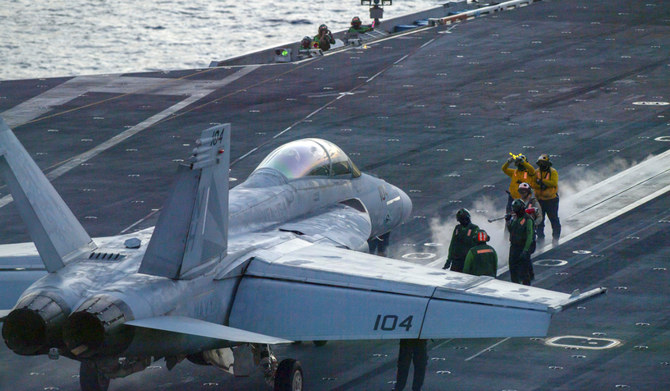JERUSALEM: Israel has threatened that every Hamas member faces death when it invades Gaza but two accused masterminds of the October 7 attacks are at the top of its hit list.
Military strategist Mohammed Deif and political leader Yahya Sinwar have already spent time in Israeli or Palestinian jails and been the targets of multiple attempts to kill them.
The hunt for the two most senior Hamas leaders in the besieged Gaza Strip will be fierce this time.
In the war of words leading up to the impending ground offensive, Israel has said that Sinwar is “a dead man walking” after Hamas fighters killed about 1,400 people and abducted more than 200 in the worst attacks suffered by Israel since its creation 75 years ago.
Israel has responded with a withering bombardment of Gaza that has killed more than 3,700 people, according to the Hamas-run health ministry, and with a volley of deadly warnings.
“Hamas terrorists have two options: Be killed or surrender unconditionally. There is no third option,” Defense Minister Yoav Gallant said.
Hamas spokesmen have responded that the Palestinian Islamist group is “not scared.”
Security sources outside Gaza say Deif and Sinwar are now embedded in a network of tunnels built to resist the bombing campaign launched after the brutal attacks on communities and military bases near the border shook Israel to its core.
But the pair have spent years operating in the shadows.
Israel has singled out the 61-year-old Sinwar, who was elected Hamas leader in Gaza in 2017 after Ismail Haniyeh became the movement’s supreme leader. Military spokesman Lt. Col. Richard Hecht called Sinwar the “face of evil” and declared him a “dead man walking.”
Sinwar was a founding member of Hamas in 1987 during the first Palestinian intifada or uprising and rose through the ranks as a fierce advocate of armed struggle.
A graduate of the Islamic University in Gaza, he learned Hebrew during 23 years in Israeli jails.
Sinwar was serving four life terms for the killing of two Israeli soldiers when in 2011 he became the most senior of 1,100 Palestinians released in exchange for French-Israeli soldier Gilad Shalit.
Sinwar and Deif were both born in the Khan Yunis refugee camp in Gaza and added to the United States’ list of most wanted “international terrorists” in 2015.
Hamas is blacklisted as a “terrorist organization” by the European Union as well as the United States.
Much less is known about Deif, Israel’s number one public enemy for the past two decades during which he has been accused of organizing suicide attacks, kidnappings and other raids.
There is only one known full-face photo of the commander of the Ezzedine Al-Qassam Brigades, Hamas’s military wing. It is at least 20 years old. The others show him either in a mask or standing in the shadows to avoid identification.
An audio message from Deif was transmitted by Hamas media on the morning of the attacks dubbed Operation Al-Aqsa Flood.
“The rage of our people and our nation is exploding,” he said.
Deif was born Mohammed Diab Al-Masri in 1965.
His assumed name means “Guest” in Arabic and he reportedly never spends more than one night in the same place. Enemies have dubbed him the “cat with nine lives” as he has survived at least six attempts to kill him.
Deif’s wife and at least one child were killed in an Israeli air strike during the 2014 Gaza war. Deif has reportedly lost one eye and been left disabled by the attempts on his life but it has not weakened his influence.
He has been involved with Hamas since the 1980s and was arrested at the start of the second intifada but escaped, or was released, from a Palestinian Authority prison in 2000. He became head of the Hamas military wing in 2002 and has been Israel’s bete noire ever since.
Israel has sent repeated warnings to the Hamas leadership since October 7.
“Every member of Hamas is a dead man,” said Prime Minister Benjamin Netanyahu.
But experts say that eliminating Sinwar and Deif would severely weaken but not crush Hamas, which is Israel’s declared aim.
“Sinwar and Deif are clearly first priority leadership, the loss of which would damage Hamas, but one presumes that the group has contingencies about their loss,” said H.A. Hellyer, an international security specialist at the Royal United Services Institute in London.






























